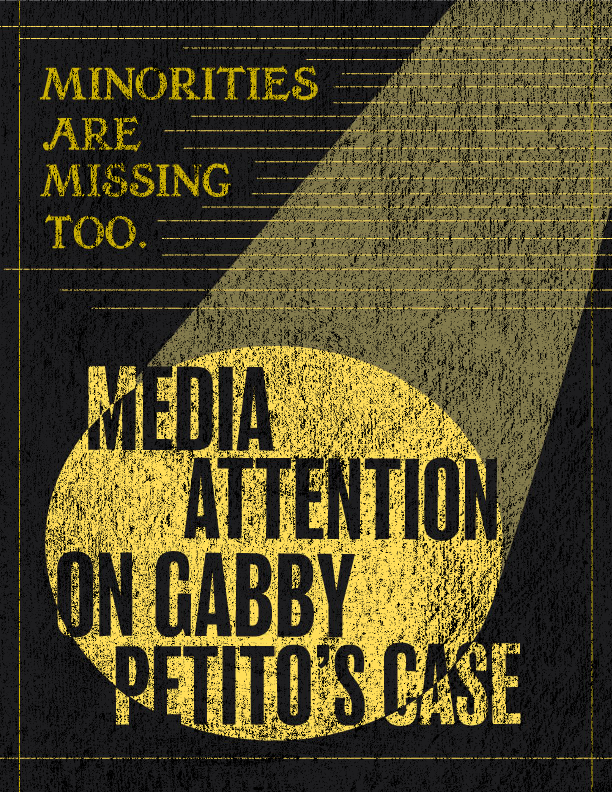Gabby Petito case ignites discussion on bias in media coverage and “missing white woman syndrome”
The Gabby Petito case has highlighted the bias in media coverage on missing people.
October 26, 2021
In the past three weeks, the media and public have become heavily invested in the Gabby Petito case.
A case that started as a missing person case has now turned into a homicide investigation with a search underway to arrest the main suspect, Petito’s fiancé, Brian Laundrie. While Petito’s case highlights the signs of domestic abuse in relationships, the case has also brought another situation to light: media coverage bias in missing person cases.
A main reason Petito’s disappearance flooded news coverage is the idea called “missing white woman syndrome.” The term, introduced by television news journalist Gwen Ifill in 2004, is self-explanatory: if there’s a missing white woman, the media will cover it every day.
In a seven-day period, Petito was mentioned 398 times on Fox News, 346 times on CNN and 100 times on MSNBC, according to Jeremy Barr from The Washington Post.
When a woman of color goes missing, media outlets don’t seem to bat an eye. According to Urban Indian Health Institute research, 506 cases of missing and murdered American Indian and Alaska Native women and girls were identified. Within those cases, only 25 percent were missing person cases, 56 percent were murder cases and 19 percent had an unknown status.
In a report by the National Crime Information Center, of the 5,712 cases of missing and murdered Indigenous women and girls (MMIWG) reported, only 116 of them were logged in the Department of Justice database.
When the media focuses closely on a missing person case that just happens to be white, has blonde hair and has blue eyes, it sends a message to communities of color, like indigenous communities, that they do not matter.
In addition when cases like Petito’s are covered heavily by the media, there is a push for officials such as the FBI to investigate the case and garner local support for the family affected. Minimal press coverage equals no effort and leads to cases not being solved. Families are left to wonder if their loved ones are still alive.
In a report conducted by the state of Wyoming’s Taskforce on Missing and Murdered Indigenous Persons, “white people were more likely to have an article written while they were still missing,” and Indigenous people were more likely to have an article written after they were found dead.
Another critical point to recognize from the sparse media coverage on missing people of color is that it is proof of the racial inequality in the U.S.
“It’s always been that white people are put on a pedestal. But for us Indigenous people, we get treated like we are human,” said Angeline Cheek, Indigenous justice organizer for the ACLU of Montana, in an interview with USA Today.
In addition, social media also propelled Petito’s case to national news. Millions of posts on all social media platforms mentioned the case and connected the dots, inspired by true-crime podcasts.
Furthermore, Petito and her fiancé were documenting their cross-country road trip, uploading a video to a YouTube channel and posts on social media. So, it is not that surprising that the public became consumed with trying to figure out what happened with Gabby Petito.
This isn’t meant to take away from what happened to Petito or turn this into a political conversation. It’s an analysis of media coverage and how it puts one community at the forefront with these types of cases, while minority communities struggle to receive any kind of help.
Minority communities should not have to get used to the lack of coverage or help. Accountability needs to take precedence in media outlets because there are thousands of missing person cases that do not garner a fraction of the attention Petitio’s case receives. The families of victims are not getting the closure they deserve.


